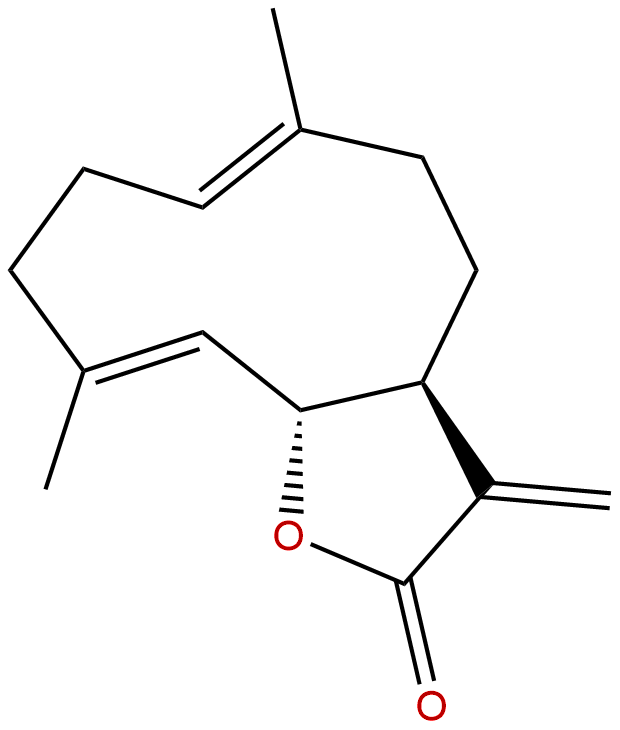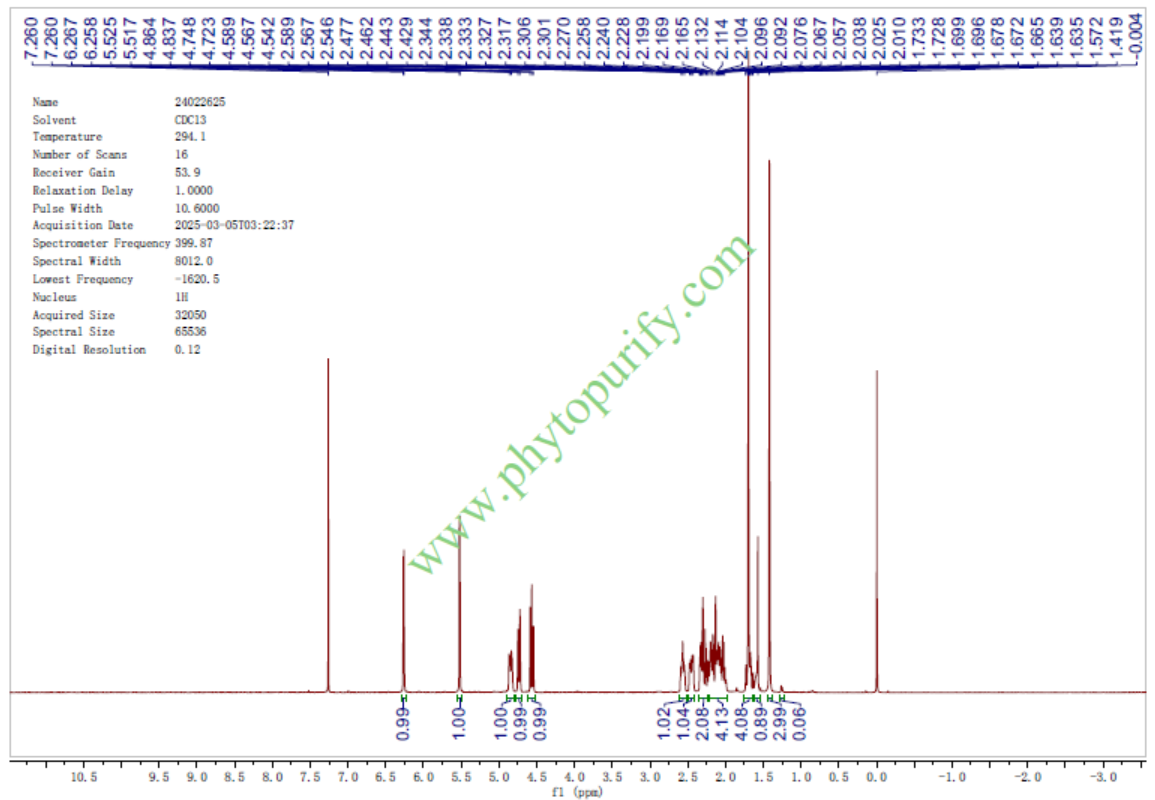
CostunolideCAS No.:553-21-9
|
||||||||||
 |
|
|
||||||||

| Catalogue No.: | BP0401 |
| Formula: | C15H20O2 |
| Mol Weight: | 232.323 |
Product name: Costunolide
Synonym name:
Catalogue No.: BP0401
Cas No.: 553-21-9
Formula: C15H20O2
Mol Weight: 232.323
Botanical Source: costus root (Saussurea lappa), Artemisia balchanorum, Talauma ovata, Talauma mexicana, Liriodendron tulipifera, Frullania tamarischii, Frullania nisquallensis, Michelia spp., Magnolia grandiflora, Magnolia sieboldii, Gochnatia foliosa, Chrysa
Physical Description: Cryst.
Type of Compound: Sesquiterpenoids
Purity: 95%~99%
Analysis Method: HPLC-DAD or/and HPLC-ELSD
Identification Method: Mass, NMR
Packing: Brown vial or HDPE plastic bottle
Storage: Store in a well closed container, protected from air and light. Put into refrigerate or freeze for long term storage.
Whenever possible, you should prepare and use solutions on the same day. However, if you need to make up stock solutions in advance, we recommend that you store the solution as aliquots in tightly sealed vials at -20℃. Generally, these will be useable for up to two weeks.
The product could be supplied from milligrams to grams, up to kilograms.
Inquire for bulk scale.
Descriptions:
Costunolide, a sesquiterpene lactone isolated from the root of Saussurea lappa Clarke, has a variety of biological activities, including anti-carcinogenic and anti-fungal activities,
it inhibits IL-1beta gene expression by blocking the activation of MAPKs and DNA binding of AP-1 in LPS-stimulated RAW 264.7 cells. [1]
Costunolide induces the ROS-mediated mitochondrial permeability transition and resultant cytochrome c release,which is one mechanism of the anticancer effect of costunolide. [2]
Costunolide has antipyretic and anti-inflammatory activities, intraplantar injection of costunolide also reduced the paw oedema, myeloperoxidase. [3]
Costunolide(20mg/kg bw) possesses normo-glycemic and hypolipidemic activity and hence it could be used as a drug for treating diabetes. [4]
Costunolide can reduce the viability and arrest cell cycling at mitosis in hepatoma cells, also enhance the killing effect of radiotherapy against human HCC cells.[5]
References:
[1] Jong Soon Kang, Yeo Dae Yoon, Ki Hoon Lee,et al. Biochem Bioph Res Co, 2004, 313(1):171-177.
[2] Lee M G, Lee K T, Chi S G, et al. Biol Pharm Bull, 2001, 24(3):303-6.
[3] Kassuya C A L, Cremoneze A, Barros L F L, et al. J Ethnopharmacol, 2009, 124(3):369-376.
[4] Eliza J, Daisy P, Ignacimuthu S, et al. J Ethnopharmacol, 2009, 179(2–3):329-334.
[5] Liu C Y, Chang H S, Chen I S, et al. Radiat Oncol, 2011, 6(1):1-8.
[6] Dong S, Liu Y T, Peng J B, et al. Benthamscience Com, 2011, 2(1):74-78.
HPLC of Costunolide

HNMR of Costunolide
